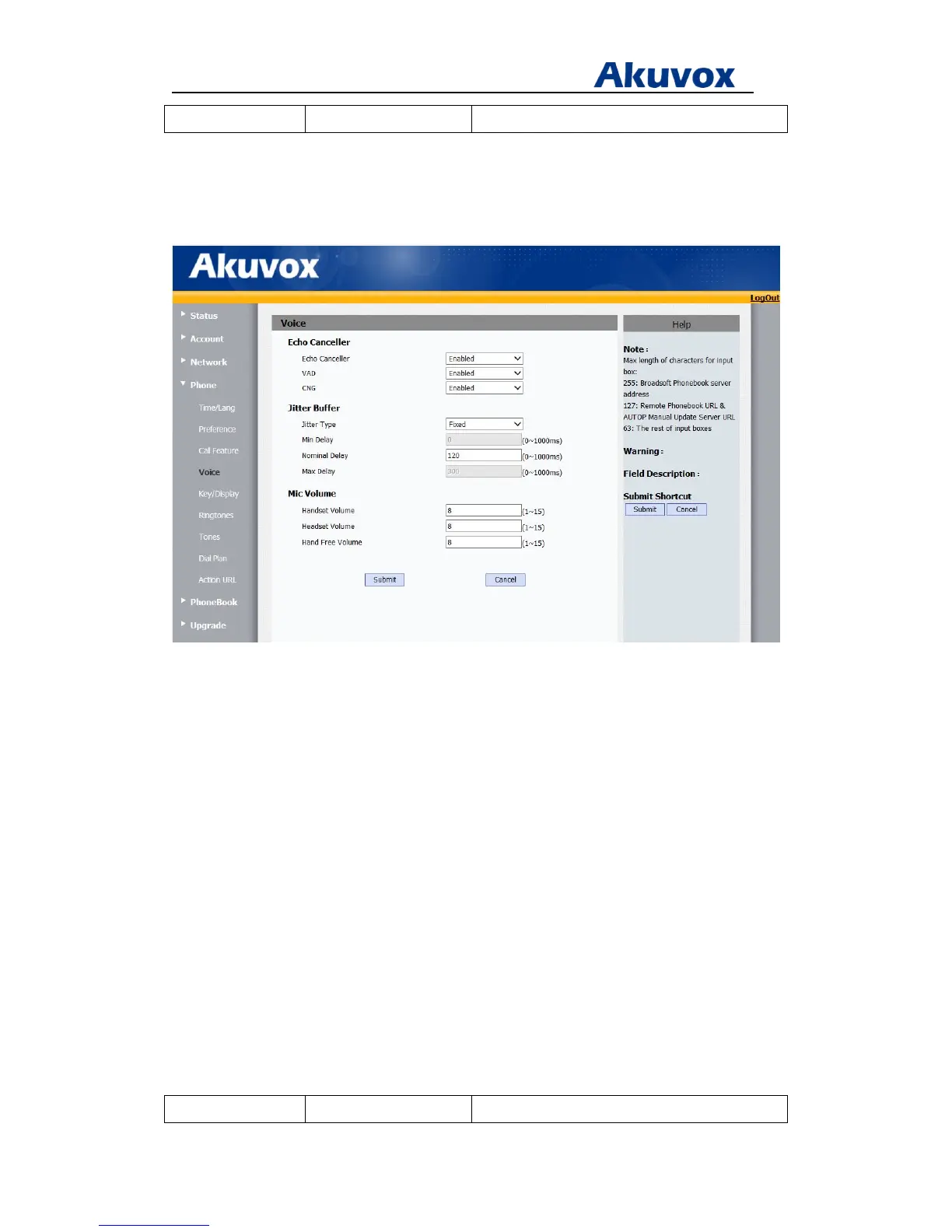Administrator’s Guide for Akuvox SP-R5xP IP Phones
Akuvox Proprietary and Confidential. Copyright © 2014 Akuvox network Co., Ltd..
Page 138 of 221
http://<phoneIPAddress>/fcgi/do?id=4&id=3
To configure CNG via web user interface:
1. Click on Phone > Voice.
2. Select the desired value from the pull-down list of CNG.
Jitter buffer
Jitter buffer is a shared data area where voice packets can be collected, stored, and sent to the
voice processor in even intervals. Jitter is a term indicating variations in packet arrival time, which
can occur because of network congestion, timing drift or route changes. The jitter buffer, located
at the receiving end of the voice connection, intentionally delays the arriving packets so that the
end user experiences a clear connection with very little sound distortion. IP phones support two
types of jitter buffers: fixed and adaptive. A fixed jitter buffer adds the fixed delay to voice
packets. You can configure the delay time for the static jitter buffer on IP phones. A adaptive jitter
buffer is capable of adapting the changes in the network's delay. The range of the delay time for
the dynamic jitter buffer added to packets can be also configured on IP phones.
Procedure
Jitter buffer can be configured using the configuration files or locally.
Configuration File <r0000000000xx>.conf/ Configure the mode of jitter buffer and the

